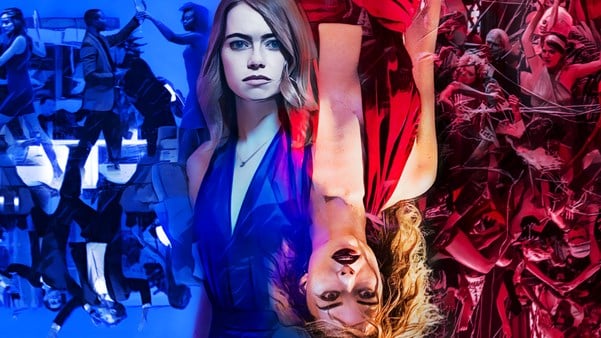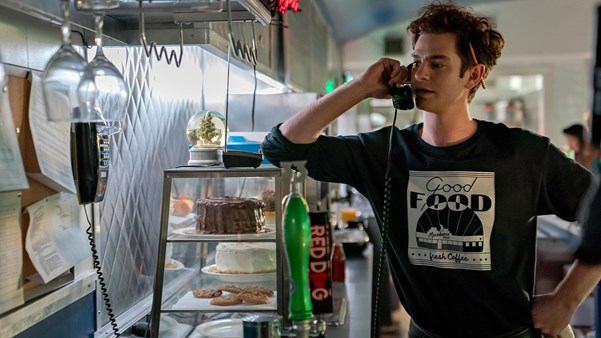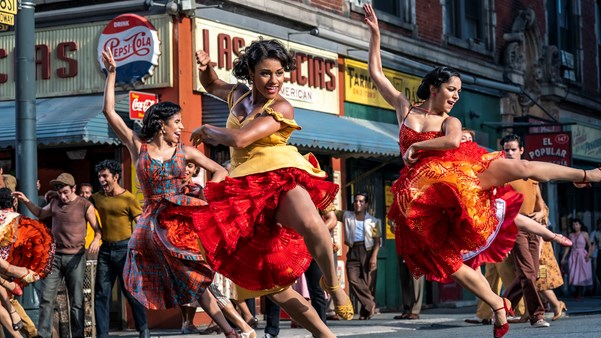Musicals are constantly falling in and out of favour. One minute, we’re praising their sunny, Technicolor optimism; the next, we’re bemoaning their lacquered falsity. Those of us who love the genre consider them pure, unfiltered escapism – a chance to inhabit a joyful, larger-than-life world where emotions are so intense they simply must be sung. Nothing says motion-picture magic quite like a lavish musical number, as the filmmakers behind the upcoming Wicked and Joker: Folie à Deux well understand. Here, we praise the key set-pieces of famous musicals, honouring everything from Ginger Rogers and Fred Astaire walking on air to Gene Kelly finding that Broadway rhythm. Lace up your dancing shoes – away we go!

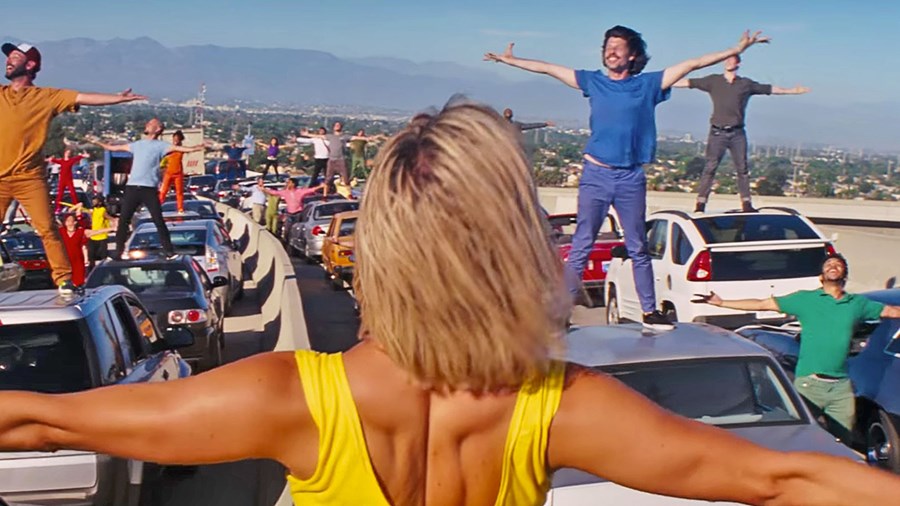
‘Another Day of Sun’ – La La Land (2017)
Never has a traffic jam been as joyous as the invigorating opening sequence of Damien Chazelle’s Oscar-winning musical. Brought to a standstill on Los Angeles’ 105 freeway, a starry-eyed driver sings wistfully of her Hollywood dreams, before exiting her car and setting in motion a stunning prologue that sees a throng of dancers – in vivid, primary-coloured outfits – ball-changing, backflipping and grape-vining down the motorway. Like many of the best musical sequences, this one elevates the mundane and turns it into something effervescent, temporarily erasing the artificiality of the genre.
What makes ‘Another Day of Sun’ all the more remarkable is that the entire four-minute scene is shot in one take, meaning it somehow wrangled a dance troupe, skateboarders, traceurs, BMX bikers and a band (spread across eight lanes of traffic) to execute their sections perfectly; and, importantly, ensured dozens of car doors slammed in total synchronicity with the song’s last note. It’s no wonder choreographer Mandy Moore said it was ‘the most difficult thing I ever did in my career’. But it was undoubtedly worth it. The resulting sequence – with Pasek and Paul’s jaunty beats, the dancers’ style-melding moves and beaming faces – is a pure shot of dopamine.
Honourable mention: ‘A Lovely Night’. Who can resist Emma Stone and Ryan Gosling tap dancing before a purpling dusk?
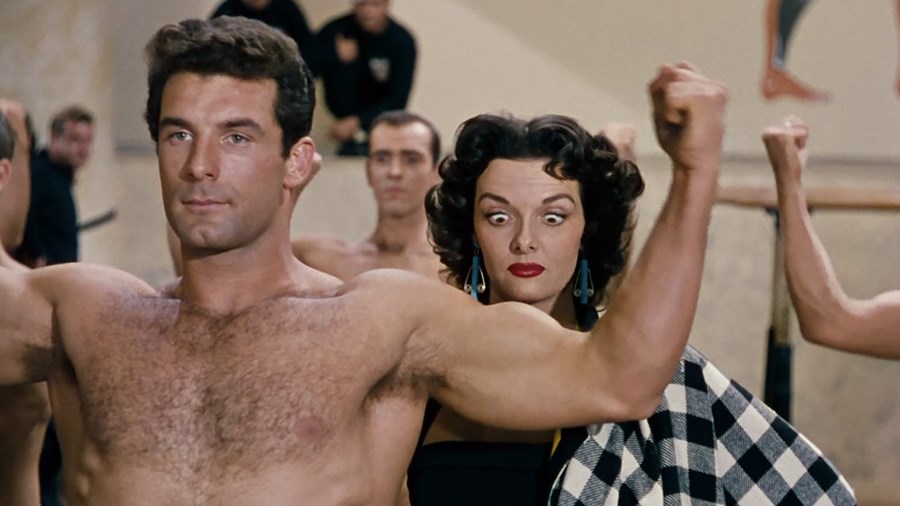
‘Ain’t There Anyone Here for Love’ – Gentlemen Prefer Blondes (1953)
Although rightfully iconic, ‘Diamonds Are a Girl’s Best Friend’, the best known set-piece in this fizzy Marilyn Monroe musical, has been parodied to within an inch of its life. One of the movie’s underrated gems is an earthy performance by Jane Russell, the level-headed brunette to Monroe’s (superficially) ditzy blonde. Accompanying her friend Lorelei (Monroe) on a transatlantic steamer, Dorothy (Russell) is dismayed to discover that the US Olympic team aboard – whom she was counting on romancing during their crossing – have a strict bedtime curfew (‘Holy smoke, nine o’ clock? That’s just when life begins!’ she squawks, dumbfounded.) ‘Ain’t There Anyone Here for Love’, which takes place in the boat’s gym, features these male athletes wearing nothing more than suggestively skin-coloured swimming trunks as they cartwheel, pummel speed bags and swing from gymnastic rings, showing off their skills. The staging is flirtatious, fun and lightly risqué.
This is a song about lust, and Russell sells it with her brassy confidence and rasp-edged vocals. She is the subject of the number, and she struts around admiring the men as if they’re toys for her pleasure – boggling her eyes at biceps and snuggling up between a weightlifter and his barbell. ‘Ain’t There Anyone Here for Love’ is the antithesis of ‘Diamonds Are a Girl’s Best Friend’. Where Dorothy is lamenting a lack of amorous opportunities and attempts to draw the athletes to her, Lorelei bats suitors away with her fan and demands material goods over affection. The numbers perfectly summarise their characters: one tough-talking but inwardly soft, the other sweet-seeming but inwardly stony. Russell’s solo ends with Team USA diving into a swimming pool and, in a production error, pushing her in with them. They pull her dripping body out of the water and she grins widely as they lift her onto their shoulders. Dorothy got what she wanted: some uninitiated physical contact.
Honourable mention: ‘Diamonds Are a Girl’s Best Friend’. Monroe’s pink satin gown, her breathy defiance, the sheer production value… there’s a reason people love it.
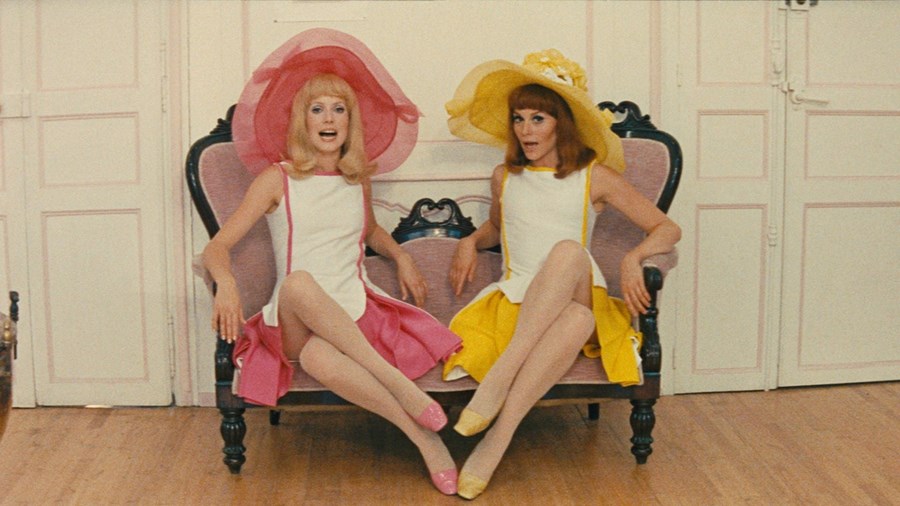
‘Chanson des jumelles’ – The Young Girls of Rochefort (1967)
A bright and bouncy character number wherein the eponymous twins (played by real-life sisters Catherine Deneuve and Françoise Dorléac, clad in complementary A-line dresses) introduce themselves through song. Jacques Demy’s The Young Girls of Rochefort is one of those musicals whose two leads are not classically trained – and it’s all the more charming for it. The performers’ technical imperfections lend spontaneity to ‘Chanson des jumelles’, making it feel like a genuine outburst of emotion that simply had to come out.
In their bright and airy apartment-cum-ballet studio, the two siblings prance about like no one’s watching, noodling on the trumpet and banjo, then melting into ecstatic giggles. The jubilant expositional number is excellently blocked, making full use of the space; and its exuberance sets the tone for a film that’s freewheeling and frothy (even the peculiar subplot about a murderer on the loose is delightfully demented). Demy could have established character motivations through dialogue but, frankly, where’s the fun in that? ‘Chanson des jumelles’ is that cheeky friend who pulls you onto the dancefloor and beckons for you to frolic, carefree, beside them.
Honourable mention: ‘Nous voyageons de ville en ville’. There are, as you’d expect for a film about twins, a lot of duets in The Young Girls of Rochefort. Seeing George Chakiris and Grover Dale gracefully twirl through a café is particularly wonderful.
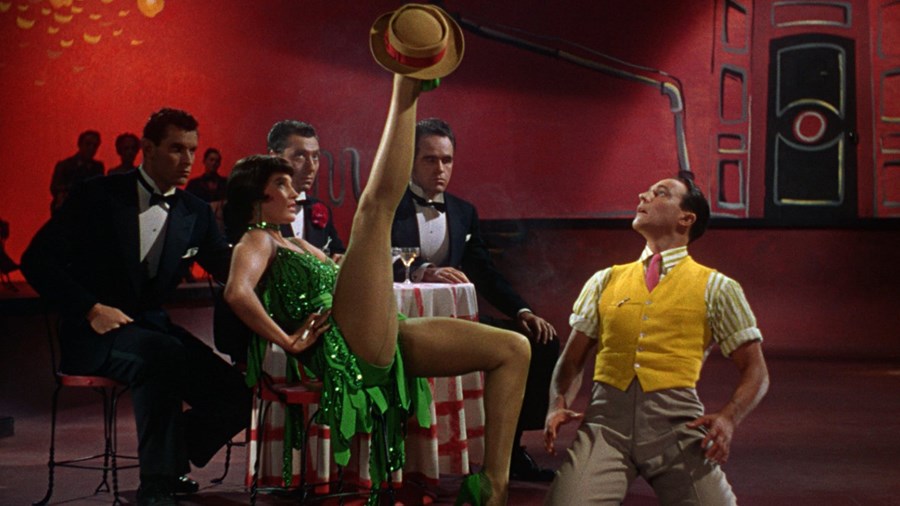
‘Broadway Melody’ – Singin’ in the Rain (1952)
It’s unfathomable that Gene Kelly was originally contracted to be a dramatic actor by power producer David O Selznick. How much drearier MGM’s classic musicals would have been without their preeminent song-and-dance man! Singin’ in the Rain, directed by Kelly and Stanley Donen, is rightfully considered the greatest the genre has to offer. The jewel in its sparkling, Technicolor crown is the mesmerising 13-minute dream ballet sequence ‘Broadway Melody’. The mise-en-abyme shows the rise of Don Lockwood (Kelly) in miniature, from his vaudeville roots to the big time. The number was a colossal undertaking: MGM spent $600,000 (more than seven times the outlined budget) and combined its two biggest soundstages to achieve the filmmakers’ vision. And what a vision.
‘Broadway Melody’ is a veritable banquet for the eyes, with its swathes of vibrantly costumed dancers; luminous, transitioning sets; and layered storytelling. Leaping into frame, then gliding through it on a conveyor belt, Kelly’s aspiring hoofer pulls his way up the showbiz ladder, and we see him adopt different dance (and sartorial) styles to reach his goal, starting with the ‘low art’ of burlesque before ascending to the heights of the Follies. The sequence features two outstanding duets with dancer Cyd Charisse. In the first, known as ‘The Vamp Dance’, the music slows to a sultry, saxophone-led purr in the symbolically fire engine-red bar as Charisse’s temptress seduces Lockwood with such palpable carnality that Production Code reviewers made the directors cut one of the overly suggestive moves. The next is a pastel-hued dream-within-a-dream – direct inspiration for Barbie’s ‘I’m Just Ken’ performance – where Charisse, now softer and more balletic, wears a billowing white train so long it practically tickles the ceiling. It, like the rest of the whirling beauty of ‘Broadway Melody’, is pure poetry. Gotta dance, indeed.
Honourable mention: ‘Moses’. A tongue-twisting elocution lesson goes from work to play as Kelly and Donald O’Connor gleefully barrel-roll through the classroom.
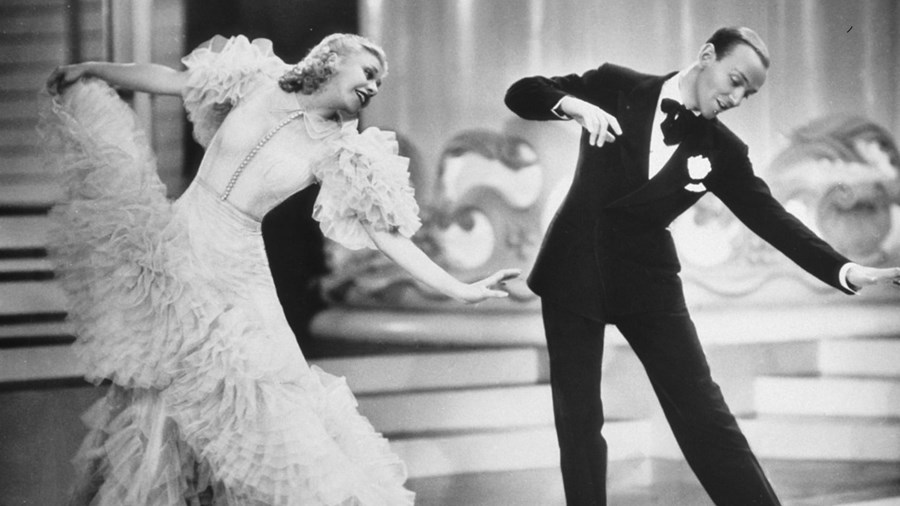
‘Cheek to Cheek’ – Top Hat (1935)
Fred Astaire and Ginger Rogers enjoyed one of Hollywood cinema’s most enduring partnerships, making 10 films together between 1933 and 1949. Of their many dance sequences, none is as iconic as ‘Cheek to Cheek’, where Astaire’s smitten Jerry woos Rogers’ principled Dale with his trilling tune. Faces pressed together, as the Irving Berlin lyric indicates, the pair are held in medium close-up as they foxtrot steadily across a ballroom, while other couples waltz along in the background. It’s contained and intimate, with more attention paid to the romance of the moment than the virtuosity of the steps – indeed, Astaire completely stops swaying at one point and pulls Rogers away so he can sing directly to her (cheek to cheek not making for great eye contact, you understand).
Soon enough, he has guided her away from the crowd and into a secluded, marble-floored auditorium where they can be alone for the song’s extended instrumental break. It’s only then that director Mark Sandrich pans out, allowing us to fully appreciate the performers’ bodies in motion, and simultaneously maintaining the effect we’re intruding on something private by shooting them from behind columns. (Let’s not forget that dance scenes were often used as stand-ins for the sex act in Thirties movies.) Fred and Ginger spin and dip and sidestep; there is tap, too, of course, but executed with such delicacy that we barely hear the clacking of their shoes. Rogers wears an elegant ostrich-feather gown that pools fetchingly around her throughout the number. By its climax, when her partner lifts her so high it’s as if she’s – to quote another Astaire line – walking on air, its silken fabric swoops impressively above his head. Fun fact: Astaire hated that moulting dress with such a passion that he tried (and failed) to change it, and ended up nicknaming Rogers ‘Feathers’ for the rest of their career.
Honourable mention: ‘Isn’t This a Lovely Day’. Fred and Ginger get caught in the rain – well, under a pergola – in this looser, more casual sequence in which Ginger has swapped her ball gown for trousers.
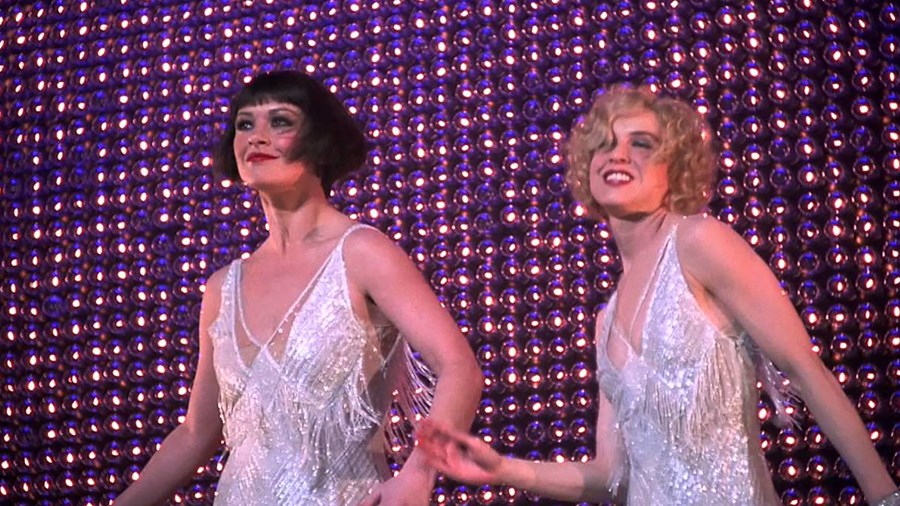
‘Nowadays/Hot Honey Rag’ – Chicago (2002)
Roxie Hart (Renée Zellweger) and Velma Kelly (Catherine Zeta-Jones) are natural enemies precisely because they are so similar. Both are self-obsessed, both are attention-hungry… both are inmates on trial for murder at Cook County Jail. They spend most of Chicago cutting each other down and tripping each other up as their respective fame – or should that be infamy? – rises and falls with the news cycle. But all that bad blood has been wiped clean by the film’s show-stopping finale. It’s a double act that each woman would rather be hanged than agree to earlier in the movie, before realising she ‘just can’t do it alone!’
‘Nowadays/Hot Honey Rag’ is the first time Velma and Roxie properly collaborate. They rise up from a trap door onto the stage of a massive vaudeville hall, clad in impossibly white, fur-lined coats. When they begin to sing, we recognise the lilting tune; it was Roxie’s audition piece for a solo show, where the casting agent cut her off mid-bar. Now, sharing a spotlight with her former nemesis, she has what she’s always wanted: an adoring, paying audience. The number kicks into high gear when the beat drops, a 12 foot wall of vanity bulbs lights up and the performers shuck off their coats to reveal silver minidresses whose beaded fringing slaps against their cartwheeling, charlestoning frames. Roxie and Velma are clearly overjoyed to be there, their grins are as bright as the lights behind them. ‘Nowadays/Hot Honey Rag’ is delightfully tongue-in-cheek, particularly when the one-time convicts bring out machine guns – which earns a disbelieving, but loving, headshake from their lawyer (Richard Gere) – to dance with. The song is a victory lap. It celebrates Roxie and Velma’s freshly cleared names, release from prison and newfound alliance. And it does it with a tremendous amount of zeal and verve.
Honourable mention: ‘We Both Reached for the Gun’. Gere’s master manipulator of an attorney pulls the strings with the press (rendered as puppets), while Zellweger is unnervingly convincing as a boneless ventriloquist doll.
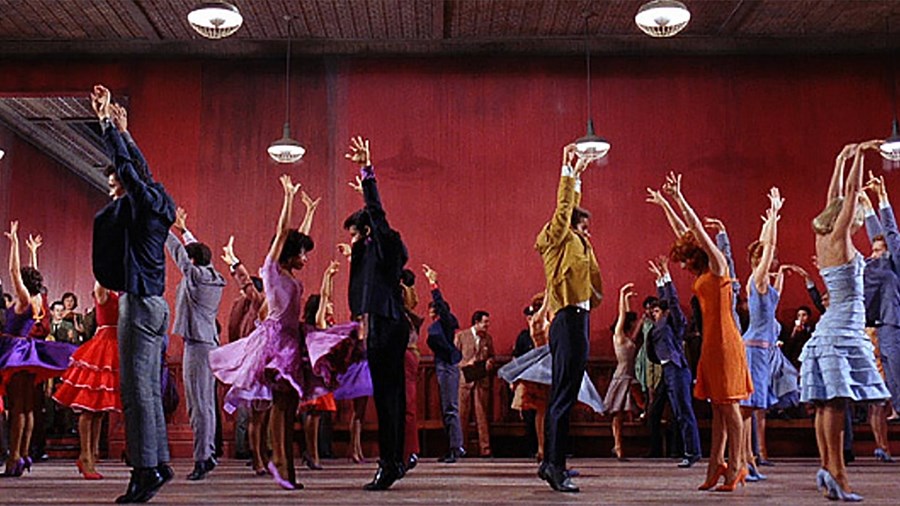
‘Dance at the Gym’ – West Side Story (1961)
How do you visually communicate love at first sight? For West Side Story directors Jerome Robbins and Robert Wise, it’s a stripping away, a quieting of the noise. There is a lot going on during the opening stretch of ‘Dance at the Gym’. Dozens of warring Jets and Sharks flood the space, ignoring the organiser’s efforts to integrate the groups and sticking obstinately to their own. They dance angrily, competitively, as if to keep themselves from brawling. The gangs separate into two lines and scream ‘Mambo!’ at each other, before forming two closed-off circles: the Puerto Rican Sharks show off their fluid, merengue-inflected movements, while the white American Jets favour high-kicks and jerky head-bobs. It’s aggressive, an ominous glimmer of the violence to come in this ill-fated Shakespearean tragedy.
Into this fray step Maria (Natalie Wood) and Tony (Richard Beymer), stuck on either side of the racial divide. Once they lock eyes, everything falls away – for them and for us. The filmmakers enter their points of view, blurring the entire screen except for Maria and Tony so they are laser-focused on each other. The frenzy dissipates as the dancefloor clears, and the strident horns are replaced with gently plucking strings. Coloured lights twinkle as the pair, overcome by a force more powerful than themselves, are drawn together in the middle of the room. Their ensuing dance is an unexpected symphony of rocking knees, outstretched arms and rhythmic clicks. The style differentiates them from their flamboyant peers; the moves are as surprising as their sudden love. More than two minutes pass until they say anything. Words are insufficient; their bodies have already done the talking. West Side Story needs us to invest in Maria and Tony to work. This masterful sequence guarantees that we do.
Honourable mention: ‘America’. The Sharks’ fiery red and purple outfits flit across a Manhattan rooftop as the men and women express their clashing views on immigrant life through skirt-swishing tango.
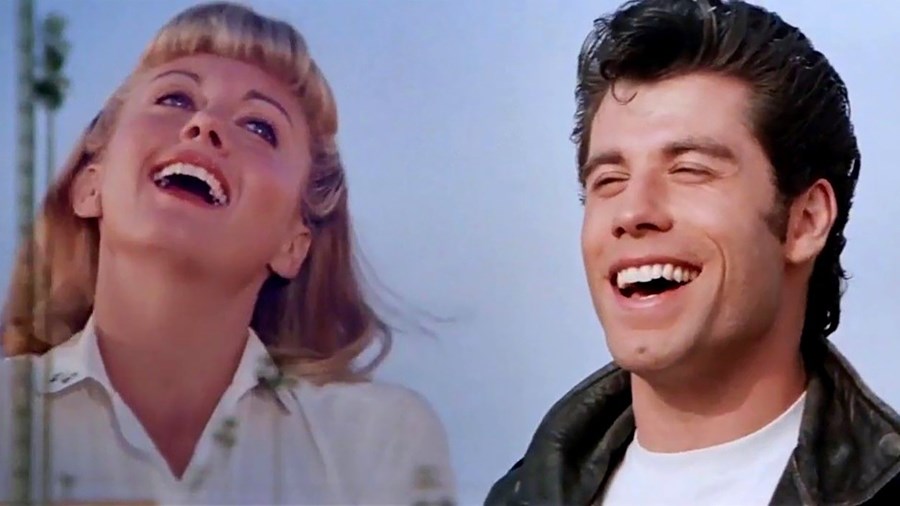
‘Summer Nights’ – Grease (1978)
A holiday romance is remembered very differently in the breezy, doo-wop number ‘Summer Nights’, which held the number-one spot in the UK singles chart for seven weeks. Much like West Side Story’s ‘America’, it’s a his-and-hers track where opinions on the fling are split between Rydell High’s boys and girls (the song’s gender-essentialist lyrics can’t help but rankle contemporary sensibilities). Director Randal Kleiser places the T-Birds on the bleachers and the Pink Ladies in the canteen, then zips energetically between them. John Travolta’s leather-clad bad boy Danny – who spent his time off dating Olivia Newton-John’s buttoned-up Sandy – presents himself as the picture of horn-dog adolescent masculinity, shaping a woman’s curves with his hands then thrusting towards them. But it’s soon apparent that his is a performance of macho bravado.
He’s more sincere and vulnerable away from his friends’ prying eyes. Alone, Danny seems to entirely empty his lungs when sighing over Sandy’s memory, and, for the song’s indelible final note, breaks into a falsetto that he’d hidden from his pals. Where the boys swagger across benches, pop their collars and fist-pump, the girls are more stereotypically feminine, skipping daintily around lunch tables and shimmying their shoulders (with the exception of Stockard Channing’s peppery Rizzo, who mocks their romantic illusions). Sandy and Danny – who haven’t sung together for any of ‘Summer Nights’ – are united for its closing chords once they wander away from their respective groups. Kleiser superimposes Newton-John’s face onto the blue sky next to Travolta, and their soaring harmonies yearn for the fleeting beauty of their summer of love.
Honourable mention: ‘Greased Lightnin’’. It’s automatic… systematic… hydromatic… and Travolta wiggles about like Elvis on itching powder.
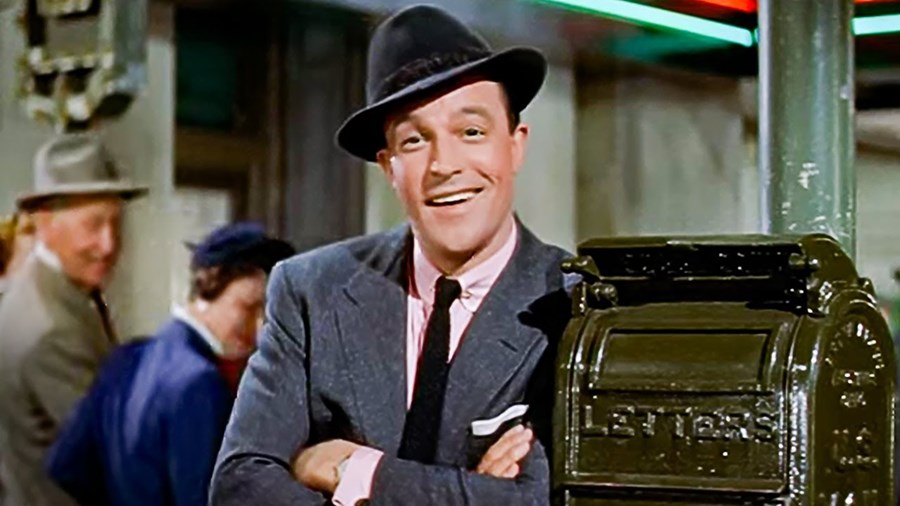
‘I Like Myself’ – It’s Always Fair Weather (1955)
One of Gene Kelly’s more underseen films, probably because of its uncomfortable pro-military stance (though really 1942’s For Me and My Gal is far more U-S-A), It’s Always Fair Weather is best remembered for ‘I Like Myself’. The song itself isn’t especially remarkable, beginning as so many Kelly numbers do with him wearing an aw-shucks expression, shrugging and whistling a breathy tune before breaking into full-throated singing. The twist? He’s on roller skates. Roller skates that, for the record, were the actor’s own unaltered pair from home, meaning he receives no accessory-based help for the feat he’s about to attempt.
He starts slowly, gliding beautifully and effortlessly along soundstage pavements made up to look like the streets of New York. If you thought Kelly was graceful on the ground, get a load of him on wheels! He shows off a range of skills – rolling backwards, in a lunge, in an arabesque – with a poise that rivals an Olympic figure skater’s. It’s breathtaking. Gene Kelly, notorious perfectionist that he was, pushes the routine even further. Decades before Usher did it at the Super Bowl halftime show, the musical legend dances on roller skates. He heel-clicks, he spins, he jumps, he taps, all while balancing on eight wheels in a jaw-dropping display of physical prowess. The film underlines just how difficult the performance is, since more and more bystanders in the story stop to marvel at him. They burst into effusive applause at the end, and rightly so. No further proof of Kelly’s GOAT status is required.
Honourable mention: ‘The Binge’. Kelly and his GI companions each dance with a rubbish-bin lid strapped to their left foot.
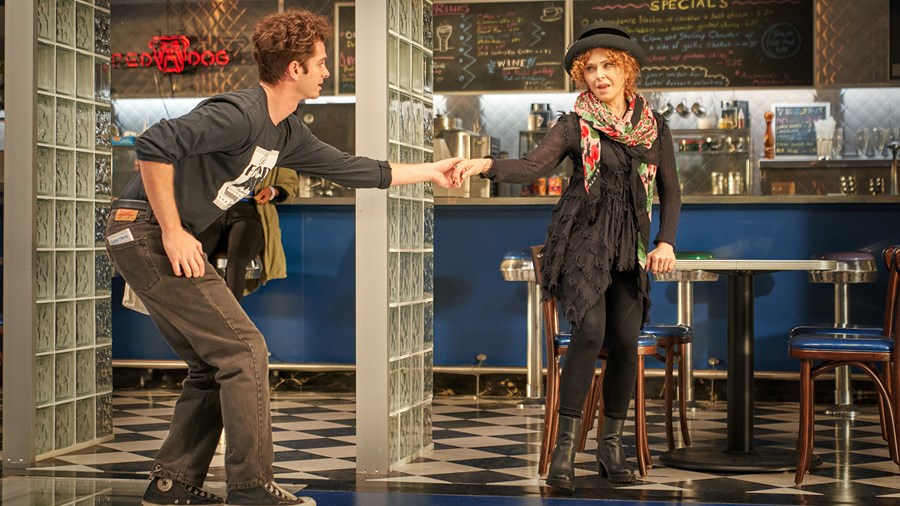
‘Sunday’ – Tick, Tick… Boom!
Musical-theatre nerds (and if you’ve got this far, you’re one of us) can’t help but rejoice at the triumphant ‘Sunday’, which sandwiches layers and layers of references into a delicious millefeuille of Broadway history. Composer Johnathan Larson (Andrew Garfield), who is gearing up to quit his waitstaff job and fulfil his ambition of writing stage shows, is working the busy weekend brunch shift at SoHo’s Moondance diner. Suddenly, everyone’s movement slows to quarter speed – a marked change of pace from the antic, high-tempo numbers that came before – and Jonathan leads the cinnamon coffee-drinking patrons in a ballad that gradually builds to a rousing climax.
Director Lin-Manuel Miranda connects musical theatre past and present with his casting: each diner his camera cuts to is an acclaimed Broadway actor, from Joel Grey (Cabaret) to Chita Rivera (Chicago). In a nod to Jonathan’s all-consuming passion for the stage, the scene transcends the established realism and literally breaks the fourth wall, with the diner’s front section pulling away from the building and floating down onto the street outside. It’s all very theatrical, and becomes even more so when you realise that Jonathan is paying tribute to his idol Stephen Sondheim’s Sunday in the Park with George (1984). By guiding the ensemble – including Sunday star Bernadette Peters, whom Garfield regards with total, heart-clasping wonderment – into position outside the restaurant, he is recreating the show’s famed denouement, where the characters form a tableau of Georges Seurat’s 19th-century pointillist painting A Sunday Afternoon on the Island of La Grande Jatte. This centrepiece sequence of Tick, Tick… Boom! is a celebratory, cameo-laden delight.
Honourable mention: ‘Therapy’. It flits merrily between Jonathan’s tearful, relationship-ending argument with his girlfriend (Alexandra Shipp) and the banjo-twanging, do-si-do ditty he converts that pain into.
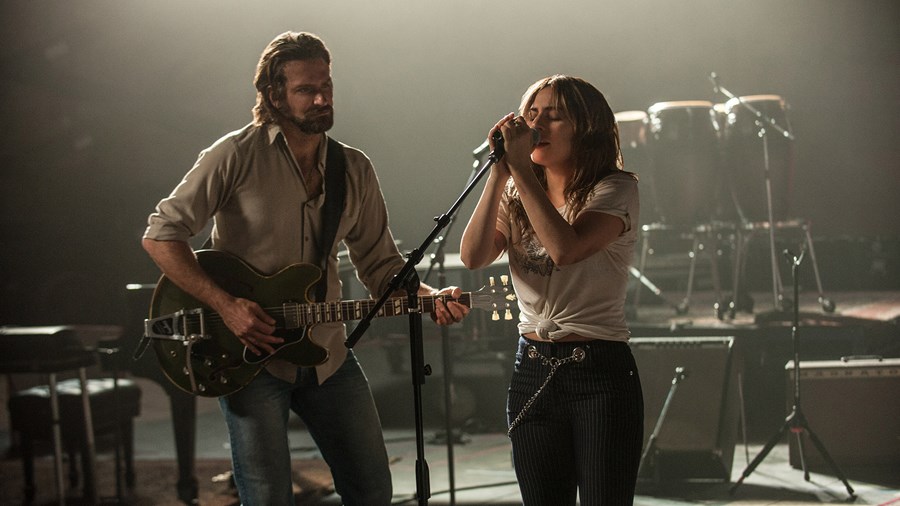
‘Shallow’ – A Star is Born (2018)
It was the song of 2018, a totemic anthem that topped the Billboard charts for 10 weeks and was a prerequisite at any karaoke bar worth its margarita salt. Anticipation for Bradley Cooper’s directorial debut – the third remake of the classic tale in which an artist couple comes to terms with their waxing and waning stardom – was at a fever pitch largely thanks to ‘Shallow’, which figured prominently in the trailer. Seen in context, it is quite clearly the centripetal force of the film. Cooper’s booze-soaked rocker Jackson has given Lady Gaga’s talented, but undiscovered, Ally an all-access pass to his show, then invites her on stage to perform her own song (which she previously sang for him acappella in a supermarket car park).
Cooper charges this moment with an unexpected intimacy. Though we can hear thousands of screaming fans, he won’t let us see them. His camera clings tightly to the characters’ faces, strengthening their growing connection. He cuts back and forth between Jackson, welcoming and relaxed on stage, and Ally, anxious and fretting on the sidelines. The searching close-ups chart Ally’s crisis – should she join him or stay where she is? – and her resolve calcifies as she steps onto the stage, bathed in contrasting blue and red light by cinematographer Matthew Libatique. ‘Shallow’ illustrates the movie’s core idea: of a fading musician ceding space for a rising one. Ally moves from her position at a secondary microphone near the wings over to Jackson’s main mic. When she lowers it down to reach her mouth it’s a passing of the torch. Ally, visibly nervous before, is giving herself over to the music in the foreground, while Jackson smiles encouragingly in the background. ‘Shallow’ finds the personal within the spectacle.
Honourable mention: ‘La Vie en Rose’. It’s the first time we hear Ally sing and, from that instant – when she struts through the drag bar belting out Édith Piaf with glass-shattering power – we know she’s destined for greatness.
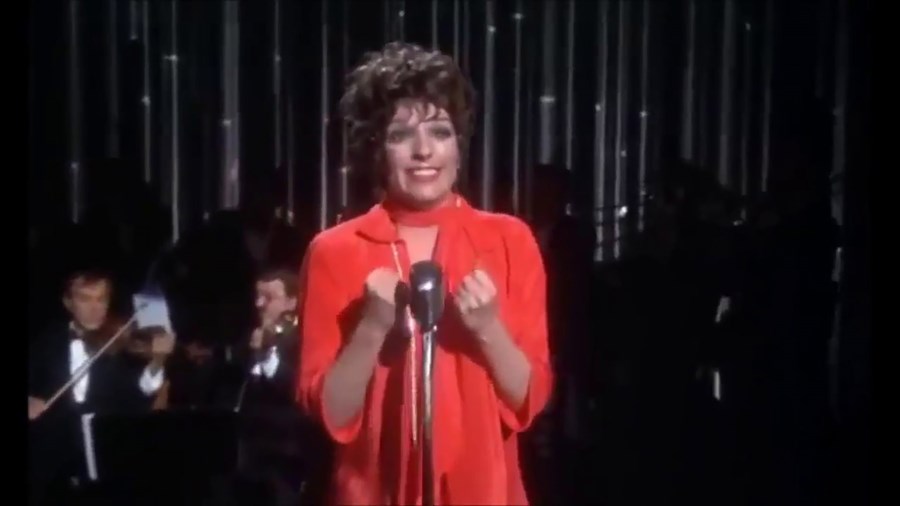
‘Theme from New York, New York’ – New York, New York (1977)
It has played at every Yankees home game since 1980, it’s a permanent fixture of the Times Square soundscape, it is Frank Sinatra’s most emblematic record… ‘Theme from New York, New York’ has become synonymous with the city itself – so much so that the song’s opening words are often dropped. But two years before it belonged to Frank, ‘New York, New York’ belonged to Liza. In the closing minutes of Martin Scorsese’s hidden gem of a musical romance, Minnelli’s singer Francine brings down the house belting out the title track. It’s a victorious moment for Francine. Her abusive ex-husband Jimmy (Robert De Niro) laid down a successful saxophone rendition of ‘New York, New York’, however, it’s her lyrics for it that propel Francine to superstardom – plus it takes place in the nightclub where the pair first met. The cut to De Niro at the line ‘I’ll make a brand new start of it’ is laden with significance.
The number isn’t all that flashy. Jean-Luc Godard famously said all you need to make a film is ‘a girl and a gun’; perhaps for a Liza film it’s just ‘a girl and a microphone’. The staging is simple: Minnelli, dressed in a voluminous red blouse, stands out against the black curtain and band behind her. She pops her hip as those timeless notes float out from the piano. A forceful performer, she clenches her fists and throws her arms out and stamps her feet. Her voice is tremendous: soft when it needs to be, booming when it doesn’t. Scorsese frequently captures Minnelli from behind, allowing us to see how rapt the audience is. When the key change comes, she removes the mic from its stand and throws herself bodily into the performance as the crowd cheers and snaps photographs. It’s era-defining. The real question is will Marty include ‘New York, New York’ in his much rumoured, dear-God-we’re-praying-it-happens Sinatra biopic?
Honourable mention: ‘But the World Goes ’Round’. Minnelli lets out a well of roiling emotion in this champagne-uncorking explosion of a number.
WATCH WICKED IN CINEMAS


